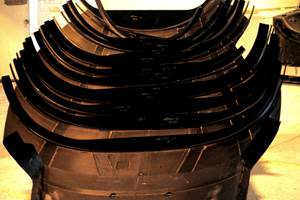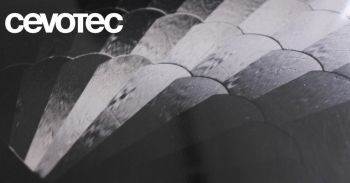Fiber patch preforms help tailor kiteboard performance
Automated means for laying fiber only where needed offers new potential to fine-tune torsional stiffness and flexibility to board and rider styles.
Kiteboarding is similar to windsurfing, except the rider is propelled by a kite instead of a sail, riding a board that is typically akin to a wakeboard — like a snowboard or skateboard adapted to ride on water. The rider controls the kite by holding a bar attached to lines and may ride barefooted or can be connected to the board by means of either snowboard-like boots/bindings or windsurfer-esque footstraps. Dubbed “The New Golf” by Forbes magazine and, at one point, the fastest growing water sport, kiteboarding will be included in the 2016 Olympic sailing events as well as the International Sailing Federation’s (ISAF, Southampton, UK) World Cup and World Championships.
There are many different styles of kiteboarding. The majors include freestyle, wakestyle, speed, course racing, jumping and kitesurfing in waves. Kiteboard design, therefore, is anything but simple. Because there could be as many board styles as there are riders, the struggle for the board manufacturer is to balance the polarity between flexibility and torsional stiffness, as well as damping for control through choppy surf vs. the ability to sail quickly, and of course, always, the need to minimize weight.
North Kiteboarding (Oberhaching, Germany) is a globally regarded industry leader that faces this struggle. The company stresses the latest in materials and production techniques for its boards, as well as high performance and premium quality. It introduces new designs annually and tries to meet the needs of every rider, from the amateur to the team professional. But when asked, What do kiteboarders want in a board?, Dirk Hanel, a professional kiteboarder and the product manager at North Kiteboarding, replies, “That is hard to answer.”
Production-unfriendly design objectives
A wakestyle rider who also wants to ride obstacles in a wakeboard park, Hanel notes by way of example, is looking for a very torsion-stiff board with a round scoop rocker line — that is, the curvature in the board as seen from the side, or more simply how much like a banana it looks. “This rider prefers the board to also be a bit damping and, when used with boots, we need to reinforce the deck massively as there is more pressure on it than when riding with straps,” Hanel explains. “On the other hand, a freestyle rider may want a board that is forgiving and goes through chop smoothly, so a less stiff board is more comfortable. This rider may also want performance in light wind, so that means a flatter scoop rocker line and less weight.”
In search of ways to build boards that can deliver these and other sometimes difficult-to-reconcile performance characteristics, North Kiteboarding recently teamed with Cevotec (Garching, Germany) to test the latter’s Fiber Patch Placement (FPP) technology and its potential to fine-tune and improve the performance of a new composite kiteboard design.
North Kiteboarding makes two types of boards: wave riding and freestyle. Its work with Cevotec is for a new freestyle design. “This board is symmetric but we want an asymmetric torsion flex pattern,” says Hanel. “It has footstraps, so we want the heel side of the board to be slightly stiffer, but the toe side needs to be flexible.” Stiffness at the heel makes it easier to go upwind. “When you edge with the board — put pressure on the heel side — you create a power in the board that lets you stay upwind, much like a keel and rudder on a sailboat,” Hanel explains. Flexibility at the toe enables the rider to trace a narrower circle when turning. “What you are doing is making the windward side longer and the leeward side of the board shorter,” he says, “which then enables you to move much faster through the jibe.” (Jibe refers to a turn away from the wind to reverse direction). Hanel adds that riders want a quick response: “This is very much about improving control, which means load put through the footstraps must go to the tips of the board immediately, and the middle of the board needs to be stiffer than the tips.”
However, this combination of properties is difficult to achieve with conventional production technologies. A continuous, uniform layer of carbon fiber, for example, gives the same stiffness properties everywhere. “We can increase thickness in the middle and make the tips/tails thinner,” Hanel relates, “and we’ve put 1- to 3-inch [25.4 mm to 76.2 mm] wide unidirectional carbon fiber beams along the middle, and also laid carbon strips in a cross. But all of this is still limited. The Cevotec technology places the fiber precisely where we need it to be.”
Simplifying complexity through patches
Cevotec excels in the manufacture of parts with complex loads and/or geometry. “We can break down this complexity into unidirectional patches that align the reinforcement precisely to the load path,” explains Cevotec’s head of technology Felix Michl. “This simplifies the layup process and also enables automated manufacturing.”
FPP uses an automated line to produce unidirectional carbon fiber (CF) patches that are roughly 20 mm wide by 60 mm long by 0.08 mm thick (see Fig. 2, at left). To date it has used HTS45, IMS65 and UTS50 carbon fiber from Toho Tenax Co. Ltd. (Tokyo, Japan) and T300 and T700 fibers from Toray Industries (Tokyo, Japan) in tapes from 15-40 mm width and 60-180 g/m² areal weight. For the North Kiteboarding prototypes, it chose the UTS50 because it has the necessary mechanical properties, but lower cost for the non-aerospace market.
Next, two choreographed robots — a six-axis arm that articulates the part layup tool and a four-axis pick-and-place kinematic robot that places the patches onto the tool — precisely orient the patches along calculated load paths (see “Automated preform process boosts properties while cutting cycle time” under “Editor's Picks,” at top right). This creates highly optimized preforms for complex structures very quickly. “We have developed preforms that form the whole part or, as in this case, provide only local reinforcement,” says Michl.
The dry fiber patches are stabilized with a powdered binder that dissolves into the part’s matrix resin during impregnation and cure. Although most often used with liquid molding processes (e.g., infusion, resin transfer molding or injection molding), Cevotec patches also can be used with wet layup or prepreg, according to Michl, with the latter typically providing enough resin to sufficiently infiltrate the patches.
An important feature of FPP, however, is knowing where to put patches and how they should be oriented. “It can be difficult to predict strength due to complex loading and failure mechanisms,” Michl concedes. “But we have developed an approach that produces good results, including an algorithm to optimize the overlap between patches, which is key to achieving the highest strength and stiffness in the final structures.”
Cevotec’s in-house software suite is the key enabler here. It offers a virtual process chain, from product design to part production, which predicts the end-use mechanical properties. In the end, the amount of material used is minimized because it is placed only where needed and in the orientation required per load path, according to digital design and analysis.
Building a better board
North Kiteboarding develops its new designs using Autocad (Autodesk, San Rafael, CA, US) and Dassault Systèmes’ (Paris, France and Waltham, MA, US) Solidworks for 3D models. Cevotec imported digital files prepared for a new freestyle board into its own software to design local reinforcements that could meet both the kiteboard geometry and manufacturing process requirements, as well as achieve the desired performance improvements. Three different patch layout designs were developed for North Kiteboarding to test on the bottom sides of prototype boards (see Step 1, at left).
The preform patches were then produced using Cevotec’s automated FPP equipment. “The patches were actually layed onto a glass fiber scrim that North was using on both sides of its board to increase adhesion between its wood core and reinforcement layers,” says Michl. The scrim material was used as a base onto which the FPP system placed carbon patches along specific load paths (Step 2). “The scrim sheets with patches are very stable, robust and easy to handle,” notes Michl (see Steps 3-5). “There are 3-6 layers of carbon fiber per patch with one layer measuring roughly 0.08 mm in thickness.” The three patch/scrim preforms were then boxed and sent to the Austrian facility that produces North’s boards.
This production facility also manufactures snowboards, and uses basically the same process for North Kiteboarding’s products — wet layup with epoxy resin in a steel mold and compaction/cure in a heated compression press. The patch/scrims for the prototype boards were unpacked and arranged as part of the kits for each board layup. In this case, each board layup is done upside down, starting with what would be its top layer, a sheet of abuse-resistant polyurethane, which is also used to encapsulate the sides. Next, a scrim layer without patches, and layers of hybrid carbon/glass fiber noncrimp fabrics (NCF) from Saertex (Saerbeck, Germany), were wet out with epoxy and hand layed, followed a wood core. Over the wood core, each board’s bottom was wet-laid with layers of NCF glass followed by the bottom scrim with the FPP carbon fiber patches on it (Step 6). Next came board decorations and a final (bottom) layer of plastic (Step 7). The finished layup was then placed into a 75-120°C press for a 10-minute cure cycle (Step 8). CNC machining was used to trim each demolded board’s outline and to drill and countersink inserts for fins (inserts can be seen on the boards in Fig. 1, at left). The finished boards were shipped for North Kiteboarding testing in Mauritius, an island off Africa’s east coast.
Potential for product development
“Our testing showed exactly what we thought the Cevotec patches would do for us,” says Hanel. “We were able to feel the torsion flex we were seeking when riding the boards on the water.” Of the three designs, Hanel’s team singled out one for further refinement and began working with Cevotec to vary the patch layers, an aspect of FPP for which both companies see great potential. “We can iterate the patches in a design to tweak performance very quickly,” Hanel explains, “and keep iterating to get just what we need without having to redesign the whole board from scratch. You could never do this with the old materials.”
How quick is the turn-around? “Fifteen minutes after we sent the digital design files to the FPP equipment,” says Michl, “we had the patch reinforcements in hand.” A board revision might require less than an hour of digital design manipulation.
Hanel believes that Cevotec’s software and FPP process could speed product development “once we have more knowledge of how to exploit and build boards with the Cevotec patches.” He notes, “In the past I had to look at various layups, fibers and thicknesses of core. Now, I can just add or change the patches. It will be much simpler and very easy to create different versions of layups for different board needs.”
Will FPP eventually permeate all of North’s boards? “For now, we will start with one model,” says Hanel, noting that because patches are layed onto a scrim, the resulting board is heavier than its lightest models, which are made with TeXtreme spread-tow carbon fabrics from Oxeon (Borås, Sweden). FPP layups also are more expensive than the glass fiber layup currently used on North’s entry-level boards. “But there is an upper end where the type of tailored performance the patch technology offers is worth paying for,” Hanel points out. “If we could reduce the cost, we could use the technology in 40-50% of our boards.”
Cevotec has plans to do exactly that, putting production improvements in place to lower cost. It also says the patches don’t have to be layed up on scrim, so there are other options for further reducing weight while maintaining layup placement control.
For Cevotec, this program has been an excellent demonstration of what FPP can deliver. “You need so much less carbon fiber, just a few grams, because it’s placed only where it is needed,” Michl points out. Although it is not alone as an automated layup technology, FPP’s patch-based system, claims Cevotec’s head of business Thorsten Groene, is in a completely new category: “This approach is best able to utilize the opportunities provided by anisotropic materials,” he asserts. “We have full orientation control of every patch placed, and can vary thickness locally by numerical optimization analysis.”
But the real test comes when North’s customers take patch-optimized kiteboards to the water. “We are committed to reach the demands and needs of each rider from every target group and style,” says Hanel. “Any technology that helps us do that is a direction we want to take.”
Related Content
JEC World 2022, Part 3: Emphasizing emerging markets, thermoplastics and carbon fiber
CW editor-in-chief Jeff Sloan identifies companies exhibiting at JEC World 2022 that are advancing both materials and technologies for the growing AAM, hydrogen, automotive and sustainability markets.
Read MoreOne-piece, one-shot, 17-meter wing spar for high-rate aircraft manufacture
GKN Aerospace has spent the last five years developing materials strategies and resin transfer molding (RTM) for an aircraft trailing edge wing spar for the Airbus Wing of Tomorrow program.
Read MoreDoing the twist: A look at dimensional issues in high-temperature cured laminates
When it’s not the tooling, the root cause of dimensionally inaccurate composite parts often boils down to two things: fiber form(s) used and laminate symmetry.
Read MoreASCEND program update: Designing next-gen, high-rate auto and aerospace composites
GKN Aerospace, McLaren Automotive and U.K.-based partners share goals and progress aiming at high-rate, Industry 4.0-enabled, sustainable materials and processes.
Read MoreRead Next
Automated preform process boosts properties and cuts cycle time
Fiber Patch Placement (FPP) achieves optimized fiber orientation for up to 150% increase in stiffness and reduced cycle time, weight and material waste.
Read MoreComposites end markets: Energy (2024)
Composites are used widely in oil/gas, wind and other renewable energy applications. Despite market challenges, growth potential and innovation for composites continue.
Read MoreFrom the CW Archives: The tale of the thermoplastic cryotank
In 2006, guest columnist Bob Hartunian related the story of his efforts two decades prior, while at McDonnell Douglas, to develop a thermoplastic composite crytank for hydrogen storage. He learned a lot of lessons.
Read More

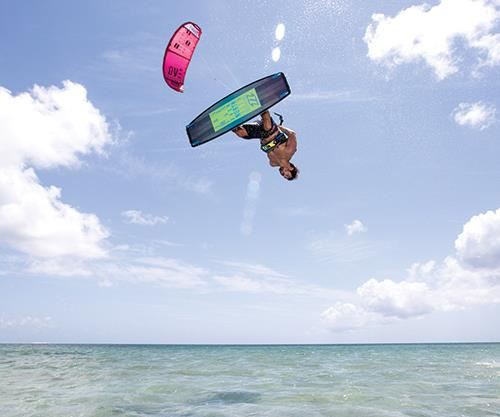
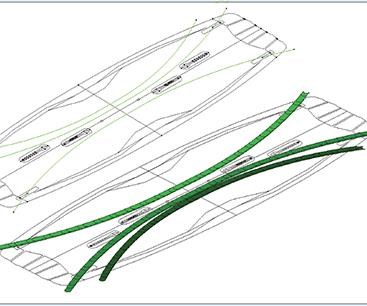

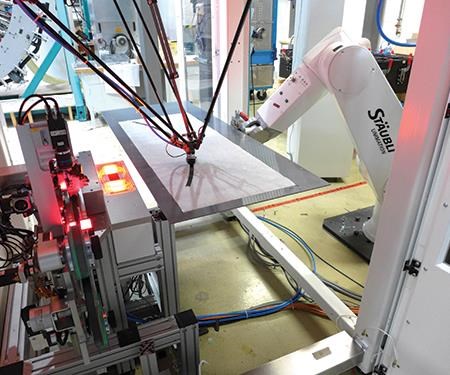
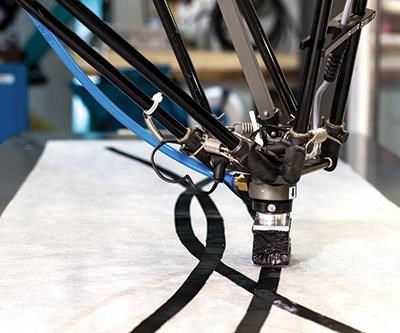
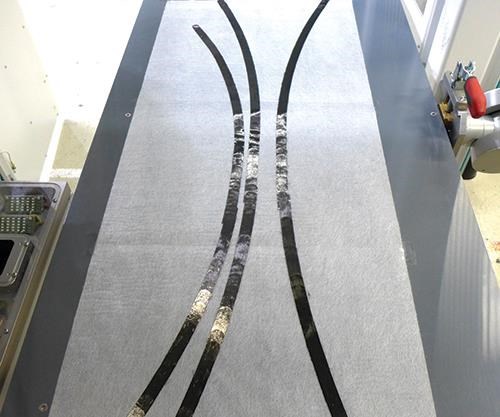
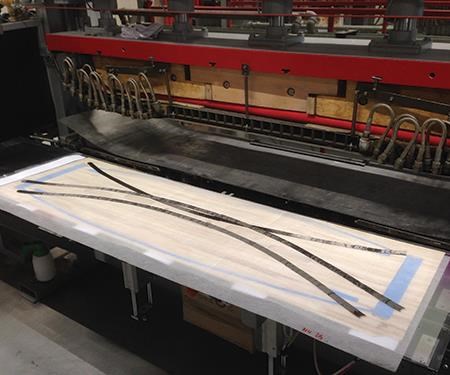

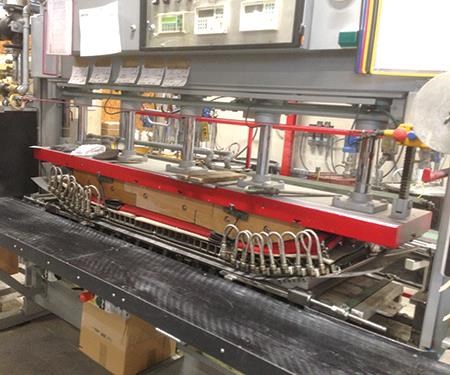






















.jpg;maxWidth=300;quality=90)



